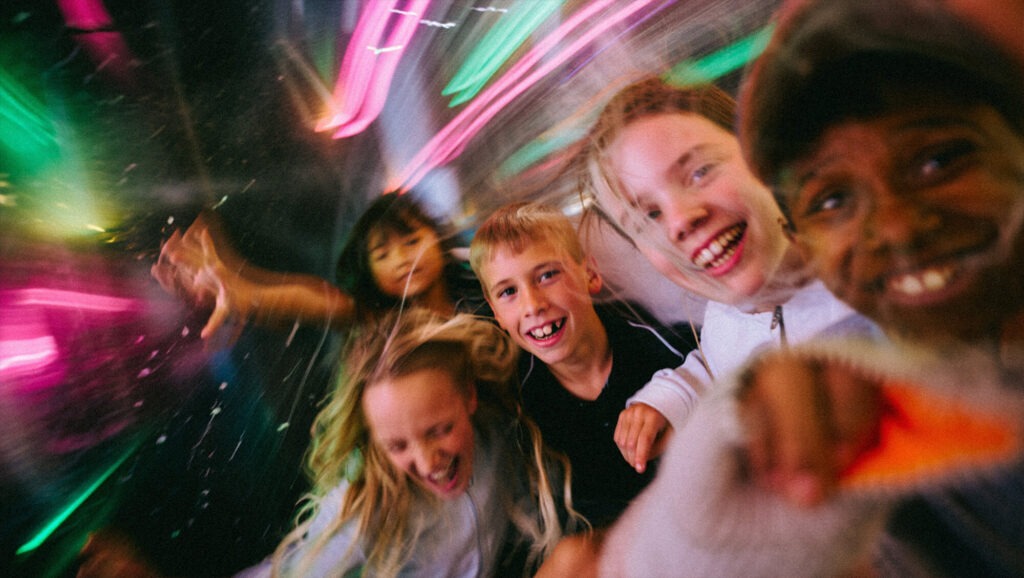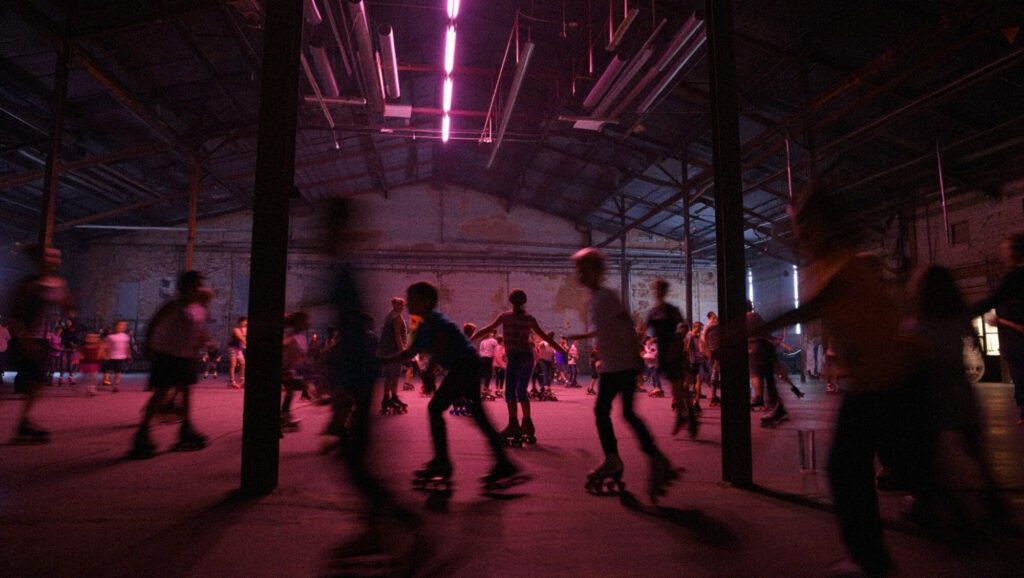Posts Tagged ‘Community’
How movement builds real connection
Why Sydney Needs SKTNG More Than Ever
In an age where “connection” usually means Wi-Fi, the simple act of being in a room together — skating, laughing, moving — feels quietly revolutionary. If you've been searching for something more real, something that gets you off the scroll and into a shared moment with actual people, you're not alone.
SKTNG isn't just another roller skating rink in Sydney. It’s a community in motion. A rebellion against the algorithm. A place where the lights are low, the music can be loud, and the people are fully present. This I suppose you could call a 'movement movement' — and it's just getting started.
The truth is, we’re drowning in convenience. Our catch-ups have become group chats. Our shared experiences are livestreamed. Movement has been replaced by marathon scroll sessions, and attention spans are fraying fast. Over 60% of Australians say they feel less connected now than before the pandemic — and it's not just the kids. Families, creatives, freelancers, even retirees are feeling it. We weren’t designed for this much screen time. We were made for movement, for laughter, for community that actually shows up.
Roller skating brings all of that back. It’s not just nostalgic — it’s social fitness. It lifts your mood, builds confidence, and surrounds you with people who are doing the same. When you're on skates, you're in sync with others — moving, reacting, playing, falling, laughing. You might come to SKTNG alone, but you'll leave having nodded, smiled, or skated past someone who made your day just a little brighter.
Science backs it up. Movement boosts serotonin and dopamine, the chemicals that help you feel good and build trust. Group activity lowers stress and enhances belonging. Add music into the mix and you’ve got an emotional cocktail that no social media app can replicate. There’s a reason we feel so good after skating: it reminds us we’re alive, connected, and capable of joy without a screen in sight.
And the research doesn’t stop there. Multiple studies have shown that roller skating is one of the most effective full-body, low-impact exercises. It improves cardiovascular health, balance, flexibility, and coordination, all without the strain of high-impact sports. But it’s not just physical. The World Health Organization reports that regular physical activity like skating can reduce the risk of depression by up to 30%, while improving memory, sleep quality, and emotional regulation.
For kids and teens, skating enhances focus, reduces anxiety, and supports social development. For adults, it’s a powerful antidote to work stress and digital burnout. For older skaters, it promotes joint mobility, balance, and cognitive health — helping prevent falls and even slow memory loss. Few activities support wellness this holistically, and fewer still do it with music, laughter, and four wheels under your feet.
SKTNG is our way of giving Sydney something it desperately needs — a third space. Not home. Not work. A space that doesn’t require a booking, a purchase, or a perfect outfit. It’s a cultural home for anyone who wants to just be. Whether you’re a teen tired of TikTok, a parent craving something fresh and screen-free, or someone who simply wants to feel part of something again — this is for you.
The rink is the anchor, but it’s only the beginning. At SKTNG, you’ll find music, themed nights, social skating games, community events, and more. The energy is electric, but inclusive. You're not expected to be good — you're just encouraged to show up. It’s about presence, not performance. And that starts the moment you lock your phone away and step onto the floor.
Because here’s the thing: we’re not anti-tech. We just believe some moments are better without the filter. Eye contact. Shared laughter. The feeling of rolling side by side with someone to a song you forgot you loved. These moments don't need to be posted — they need to be felt. That’s what SKTNG is here for.
We’re designing every inch of the space with people in mind, not profiles. A rink with proper maple flooring. Lighting that makes you feel something. Sound systems that thump just right. And a vibe that invites everyone in. It’s not about content — it’s about connection.
Whether you're new to skating or haven’t put on skates since the 90s, you’re welcome here. Come for the fun, stay for the movement, and leave with a clearer head and maybe a few new mates. No filters. No feeds. Just freedom — the way it used to feel before everything got so curated.
Follow @SKTNG.space or SKTNG.space on facebook
The movement is real. And it’s rolling soon.
No filters. No feed. Just freedom.
Why the future needs third spaces
It’s time to lace up, unplug, and roll into something real.
Remember when you could just be somewhere?
No expectations. No agenda other than to hang out, move your body, and bump into friends or total strangers — and maybe leave with a story or two.
Those places are disappearing. Fast.
In today’s cities, we’ve got two main destinations: home and work. And if you’re lucky, you might have a favorite café, a friend’s place, or the odd pub where you can gather. But the middle ground — what sociologist Ray Oldenburg called the “third place” — is vanishing. And with it, we’re losing something vital: the simple joy of human connection.
What Is a Third Space, Anyway?
Third spaces are the public or semi-public spots where community thrives. They’re not home (first space) and they’re not work (second space). They’re where life happens in between. Think: old-school roller rinks, some gyms, churches, rec centers, corner stores, skate parks, youth clubs, even record shops or video arcades.
They’re where you go just to be — no bouncer, no reservation. Just music, laughter, shared time, and maybe a few bad dance moves.
But with rising rents, shrinking leisure zones, and the algorithm slowly swallowing our downtime, these places are being replaced by feeds, not feelings.
Where Did All the Third Spaces Go?
Blame urban sprawl. Blame screens. Blame the fact that every square metre of public space now needs a business model. Or maybe blame the rise of “on-demand everything” culture. Regardless, here’s where we are:
Teen are loitering in shopping centres because there’s nowhere else to gather.
Friends catch up less in person, because why not just DM or send memes instead?
Families have fewer active, social spaces that aren’t sports fields or restaurants.
Loneliness has become a public health crisis, with social isolation affecting physical and mental health at every age.
We’re constantly online, but rarely with anyone.
Reclaiming Real Life (On Wheels)
Here’s the radical idea: What if we brought back the third space — but made it roll?
Enter: SKTNG.
SKTNG isn’t just a roller rink. It’s a movement — in more ways than one. It’s a vibrant, reimagined third space for everyone:
- Teens who need somewhere safe but fun
- Parents who want their kids off screens (and maybe even join them)
- Creatives and freelancers looking for a work-meets-play vibe
- Night owls who want more than just pubs and clubs
- Locals looking to feel like they belong somewhere again
- It’s a place you don’t need a reason to visit — you just go because it feels like yours.
Retro Wheels, Future Feels
Roller skating is having a major glow-up. The global roller skating market is booming, driven by everything from nostalgia to TikTok trends to a rediscovery of low-impact fitness. But more than that, it’s becoming a symbol of connection.
You can’t doom-scroll while skating.
You move together. Fall (yes, it happens to the best of us). Laugh. High-five strangers. You remember what real community feels like. It’s sweaty, it’s silly, it’s soul food.
And it doesn’t require a password or a profile pic.
The Future Rolls Here
We’re building SKTNG to be that rare, magic place:
- Where teens and toddlers and retirees can all share the same space.
- Where the lights glow, the music flows, and the Wi-Fi is intentionally weak.
- Where movement creates momentum, and people remember how to be people again.
Because the future doesn’t need more apps. It needs places.
Third places. Safe places. Real places. Places like SKTNG.
So roll in. Bring your friends. Or make some here.
Because you shouldn’t need a reason to belong somewhere.
Follow @SKTNG.space or SKTNG.space on facebook
The movement is real. And it’s rolling soon opening announcements, and community events.
Better yet — sign up to our mailing list and be first through the doors when the future arrives..


